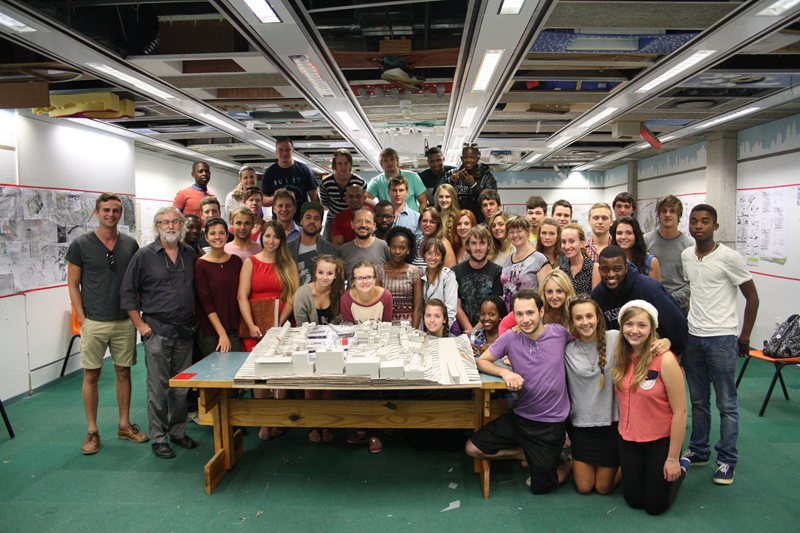
URBAN FARMVILLE
Master plan for mixed use development in the Mermaids Precinct, Port Elizabeth
Studio Staff: Donald Flint, Barry Bradley
Assistant: Simon de Vries
Historically, this area is one of the more important places of Nelson Mandela Bay, because it is where the Metropolitan Area had its beginnings on the coast. It is therefore very important for urban conservation and consequently for tourism. The entire image of the Nelson Mandela Bay Metropolitan is contained in this central area; it is the “face” that Nelson Mandela Bay presents to the rest of the world and which therefore gives it its unique identity, distinguishing it from any other city.
Mermaids Precinct is a portion of Central Hill bounded by Donkin Street, Belmont Terrace, Russel Road and Chapel Street.
Participatory Approach
The main requirement of this approach is that all persons involved in the process of looking at creating a social project have the ability to listen. This is the premise to enable a true participatory process of social and architectural design.
Participation is not a technique, nor a magic formula, and it is not taught. It is the ability to resonate with the place and the people that surround us, and it is a fundamental tool to create and enhance awareness of the roles and values of social environments.
When we speak of participation we are confronted with very concrete concepts, connected directly to the problems that a design team must be able to deal with so as to properly manage the collective project. Not taking into due account the complexity of the problems, underestimating potential social conflicts, and not leaving space for creativity are often the causes of disappointments and failures. Participatory planning involves always trying to give expression to the problems that emerge within a social group, thus identifying paths and strategies whose aim is to turn them into potential shape. It is therefore a location where you recognize and affirm the identity of different views in a collective project.
In our workshops we simulated a participatory process. We wanted to share with the students the spirit of a collective project. The purpose was to point out to students how more attention to social dynamics can lead to a good project, without frustrating their aspirations as designers. We believe that architecture must return to being a “public art,” to serve the people and not just benefit the economy or the profit made.
To read the full article written by Raul Pantaleo click here. Find the full presentation here.
back to IAW 2014